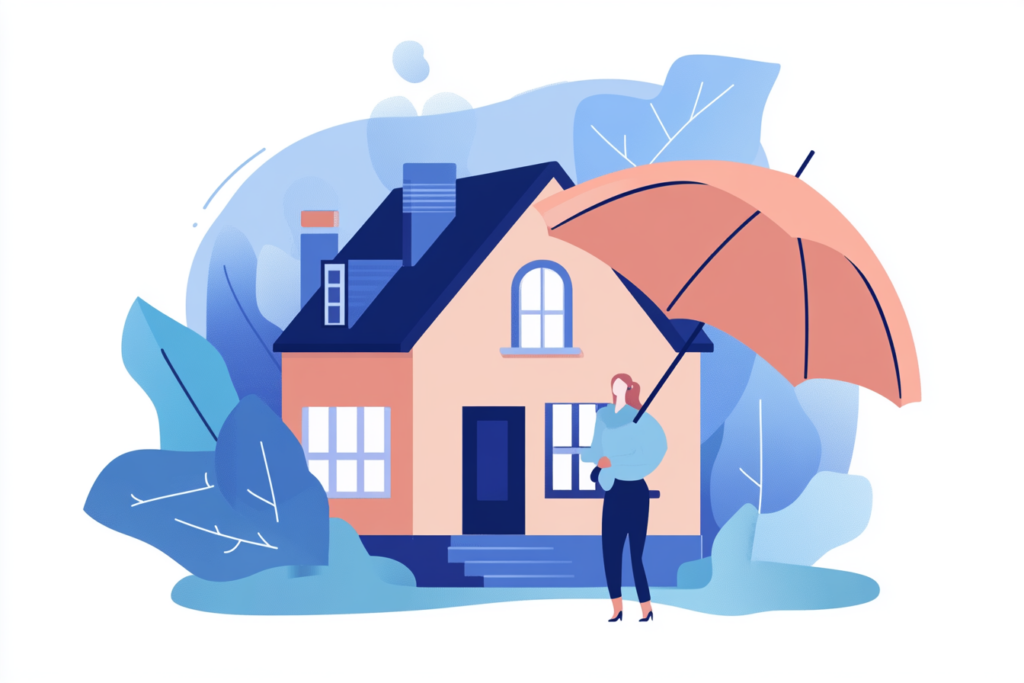Meta: Don’t overpay for homeowners insurance. Learn how you can get better rates for this essential coverage.
Homeowner’s insurance is an important protection that helps cover the cost of damages to your property or your liability for an accident on your property. While this coverage is essential, many homeowners overpay without realizing it. If you think you might be among those paying too much, take a look at these suggestions that can help you cut your insurance costs and save money.
Compare Rates
Every insurance company designs its policies and insurance rate structure differently. It’s important to shop around and compare rates for similar coverage from several insurers to find the best price. Many companies offer an online price quote tool to give you an idea of the cost in minutes, so comparing rates is easy and fast.
Bundle Insurance Coverage When Possible
If you require more than one type of insurance, say home and auto, purchasing both from the same company can save you money. Most insurance companies offer multi-policy discounts when you bundle your policies. Obtaining all your insurance from one place is also convenient for paying your bills and accessing your information all from one place.
Explore Loyalty Discounts
While you should always stay open to exploring potential savings from other carriers, your loyalty to one company for years can be advantageous. You could save up to 10 percent after sticking with the same company for six years or longer.
Understand the Difference Between Cash Value and Replacement Cost

When you purchase a homeowners insurance policy, you must choose between actual cash value and replacement cost. The actual cash value option covers the current, depreciated value of your claimed items. Replacement cost insurance covers the full price of new items of similar quality and value to the ones you lost.
Actual cash value coverage is less expensive, but replacement cost provides more comprehensive coverage. You need to determine which type of coverage is better suited for your needs and your financial situation.
Review Your Policy Limits Annually
It’s normal for your insurance needs to change over time. Avoid overpaying for unnecessary coverage by taking some time to review your policy each year. This is a simple way to refresh your knowledge of your coverage and make adjustments to reflect any changes.
Don’t File Small Claims
Filing a claim may increase your insurance rate. For minor claims, you may want to consider paying out of pocket instead of submitting a claim and risking a spike in your insurance premium.
Make Preventative Home Improvements
Your insurer may offer discounts for certain home improvements or renovations. Common improvements that can increase your savings include updating your roof, installing storm-resistant windows, adding storm shutters, updating your old electrical system, and installing a sprinkler system.
On the other hand, keep in mind that new additions or using premium home materials can increase your rates since they add value to your home.
Eliminate High-Risk Items
Outdoor changes like cutting trees that hang over your home, removing your swimming pool, and eliminating a woodburning fireplace can also save money by reducing the risk of a costly accident. Even playground equipment and trampolines can bump up your rate.
Update Your Home’s Security
Like home improvements, installing or upgrading your security system can lower your insurance rate. Most carriers give better rates for homes with updated security or smart-home devices that increase security and lessen the chances of theft or damage.
Explore Private Policies in High-Risk Areas
If you live in a high-risk area for a natural disaster or flooding, for example, you may have purchased your insurance from a government program like the National Flood Insurance Program. However, some private companies are offering a more comprehensive list of events that are covered and higher coverage. You might want to consider exploring these private options to look for savings opportunities.
Ask About Group Insurance
Some employers offer group insurance plans that come at a discounted rate. Ask your employer or other professional groups you belong to if they participate in group coverage.
Adjust Your Deductible
Raising your deductible means you will need to pay more out of pocket if you file a claim, but this move is an easy way to lower your homeowner’s insurance premium rate. It’s important to have enough saved to cover your deductible in the event you do need to file a claim.
Take Advantage of Discounts
You may be eligible for one or more discounts offered through your insurer. Purchasing a new home, signing up for paperless billing, and having no recent claims history are all examples of scenarios that could qualify you for a lower insurance rate. Make sure to browse the list of discounts available or ask your insurance company directly to discover more ways to save.
Work on Your Credit Rating
Many states take your credit score into account when determining your premium cost. Lower scores lead to higher rates. Know your credit history so you don’t run into any surprises when shopping around for home insurance. If you have poor credit, work on boosting your score to help you access better insurance rates.
Factor Insurance into Your Projected Home Buying Costs
Don’t get caught in a situation where you can’t afford the necessary insurance after buying your home. Make sure you include the cost of coverage in your budget so you can obtain this essential policy.
Coverage rates can vary drastically between carriers, but by arming yourself with knowledge and shopping around, you can discover the best rates available to get the coverage you need. Remember to always read the details of your policy, and don’t be afraid to ask questions to clarify anything that’s confusing. By taking a proactive approach, you can get the essential homeowner’s insurance coverage you need at an affordable rate.
You might also be interested in: 6 Ways Parents Can Teach Their Kids Financial Independence







